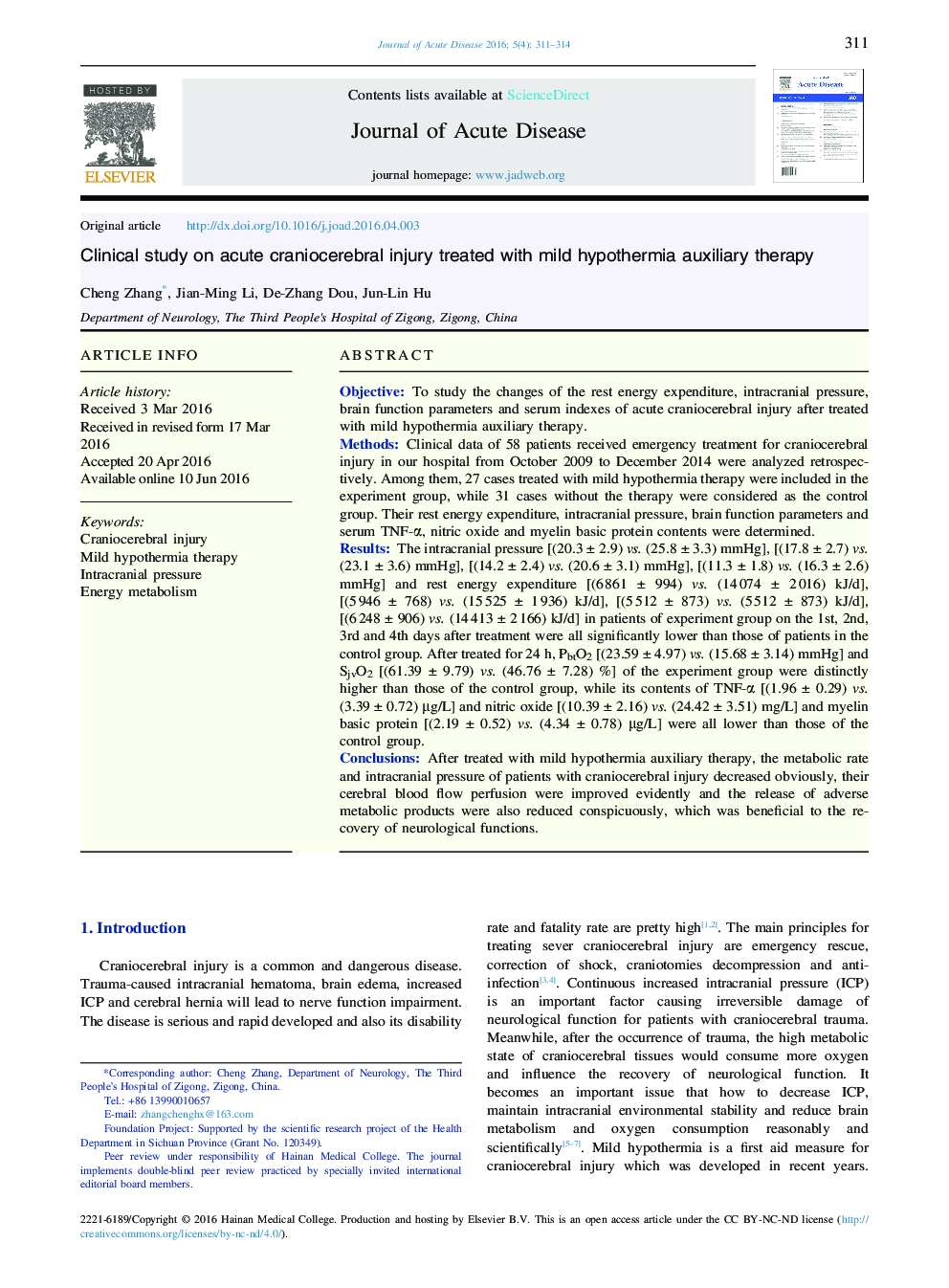| Article ID | Journal | Published Year | Pages | File Type |
|---|---|---|---|---|
| 3475077 | Journal of Acute Disease | 2016 | 4 Pages |
ObjectiveTo study the changes of the rest energy expenditure, intracranial pressure, brain function parameters and serum indexes of acute craniocerebral injury after treated with mild hypothermia auxiliary therapy.MethodsClinical data of 58 patients received emergency treatment for craniocerebral injury in our hospital from October 2009 to December 2014 were analyzed retrospectively. Among them, 27 cases treated with mild hypothermia therapy were included in the experiment group, while 31 cases without the therapy were considered as the control group. Their rest energy expenditure, intracranial pressure, brain function parameters and serum TNF-α, nitric oxide and myelin basic protein contents were determined.ResultsThe intracranial pressure [(20.3 ± 2.9) vs. (25.8 ± 3.3) mmHg], [(17.8 ± 2.7) vs. (23.1 ± 3.6) mmHg], [(14.2 ± 2.4) vs. (20.6 ± 3.1) mmHg], [(11.3 ± 1.8) vs. (16.3 ± 2.6) mmHg] and rest energy expenditure [(6 861 ± 994) vs. (14 074 ± 2 016) kJ/d], [(5 946 ± 768) vs. (15 525 ± 1 936) kJ/d], [(5 512 ± 873) vs. (5 512 ± 873) kJ/d], [(6 248 ± 906) vs. (14 413 ± 2 166) kJ/d] in patients of experiment group on the 1st, 2nd, 3rd and 4th days after treatment were all significantly lower than those of patients in the control group. After treated for 24 h, PbtO2 [(23.59 ± 4.97) vs. (15.68 ± 3.14) mmHg] and SjvO2 [(61.39 ± 9.79) vs. (46.76 ± 7.28) %] of the experiment group were distinctly higher than those of the control group, while its contents of TNF-α [(1.96 ± 0.29) vs. (3.39 ± 0.72) μg/L] and nitric oxide [(10.39 ± 2.16) vs. (24.42 ± 3.51) mg/L] and myelin basic protein [(2.19 ± 0.52) vs. (4.34 ± 0.78) μg/L] were all lower than those of the control group.ConclusionsAfter treated with mild hypothermia auxiliary therapy, the metabolic rate and intracranial pressure of patients with craniocerebral injury decreased obviously, their cerebral blood flow perfusion were improved evidently and the release of adverse metabolic products were also reduced conspicuously, which was beneficial to the recovery of neurological functions.
